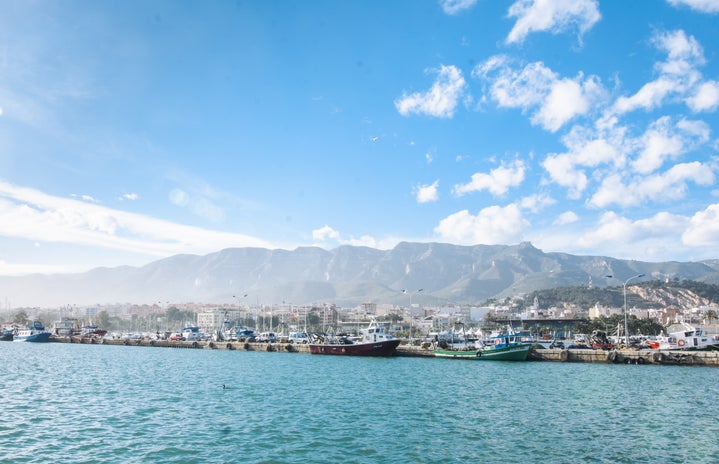Many Canadians have learned about the Halifax Explosion, or at least have heard it mentioned in their history classes. But how many of us know the true story of the Halifax Explosion of 1917?
World War One had already been going on for years at the time of the Halifax Explosion, and had brought great prosperity to Halifax as a wartime city. Halifax was one of the only Canadian ports that remained nearly always ice-free which resulted in hundreds of British, Canadian, and American ships coming in and out of the port weekly. Both troops arriving and leaving came in and out through this port, while supplies were often being sent in and out as well. However, because the port was so widely used, it was a great fear of Canadians that one day German ships would come through and attack the city.
The day of the Halifax explosion was an early morning in December of 1917. Merchant ship Imo was leaving the port en route to New York to pick up supplies for the population of Belgium. At the same time of its departure, another ship known as the Mont Blanc was arriving at the Halifax port stocked with French ammunition.
The Imo had reached the Narrows – the most narrow section of the harbour – however, the ship was travelling on the wrong side of the harbour. The Mont Blanc began entering the harbour at the same time as Imo‘s departure. As Mont Blanc approached the narrows, the two ships realized they were heading for a straight on collision. The two ships’ captains failed to communicate and failed to swerve out of each other’s paths. The Imo struck the side of the Mont Blanc, leaving a large gash in the side of the ship, sparking the ammunition that was being transported.
The Mont Blanc burned for nearly 30 minutes in the harbour, attracting hundreds of people in the city of Halifax to the harbour shore. It was only the naval officers in the harbour at the time that realized the true danger of what was about to happen. The men on the Mont Blanc who managed to escape the fire, rowed to shore shouting at the pedestrians on the shoreline watching the fire. However, barely anyone in Halifax at this time spoke French, so no one understood the warnings of the nearing blast.
One of the only men to learn of the imminent danger of the Mont Blanc was a railway dispatcher by the name of Vincent Coleman. He was ready to flee the scene, when he realized trains full of passengers were due to arrive any minute. Including a train at 8:55am. Coleman heroically stayed at his post and warned any trains that were to arrive in Halifax to not enter the city, to stay back. He stated: “Munitions ship on fire. Making for Pier 6. Goodbye.” Ultimately, the train never made it into Halifax, and avoided the explosion.
8:45am December 6, 1917: The Imo and the Mont Blanc collided
9:05am: The Mont Blanc exploded sending out a shock wave in every direction.
The explosion was followed by a tsunami from the harbour. Over 2.5km was destroyed from the blast, the tsunami, and the fires that began when buildings collapsed. Schools, houses, the railway office, and hundreds of people were completely obliterated in the blast. The blast from the explosion of the Mont Blanc shattered windows that were over 100km away. Burning fragments of the Mont Blanc came raining down on the city of Halifax.
One of the areas most affected by the blast was that of the Mi’kmaq Indigenous community of Turtle Grove. They were struck with the full effects of the blast and soon after almost completely wiped away by the tsunami.
Over 1700 people were killed in the Halifax Explosion, however in 2004 this number was revised to nearly 2000. Over 9000 were injured, while hundreds more were left homeless. This was the largest explosion in history at the time and no blast was larger until the bombs were dropped on Hiroshima and Nagasaki in 1945.
Foreign assistance arrived quickly, with Halifax receiving help from Britain and the United States. The military response was quick, with wartime nurses and surgeons helping the injured. Relief trains from neighbouring Canadian provinces arrived with support teams. Survivors rushed through the collapsed houses, hoping to find their neighbours, and friends alive under all the rubble while others helped clear debris from the road.
The Halifax Explosion made headlines around the world. Relief was provided to the city from around the world. Different countries sent medical supplies, clothing, and building materials. Money was raised all around the world, with even countries like Australia donating up to $250,000 to the city.
Many began to wonder how the explosion happened. They worried that it had actually been an act of German terrorism. However, in 1919 the Supreme Court of Canada declared that the Imo and Mont Blanc were both at fault for the collision.
Today, there are numerous monuments around Halifax that commemorate this historical event. The Maritime Museum has a permanent exhibit dedicated to the Halifax Explosion and remembering those who lost their lives on that December morning. In 2019, the museum updated their exhibit to include remembrance for the Indigenous community that was lost, while also recognizing the African-Nova Scotian immigrants and the military voices of those who were present during the blast.
To learn more about this event in Canadian history check out these links:
https://maritimemuseum.novascotia.ca/what-see-do/halifax-explosion
https://www.thecanadianencyclopedia.ca/en/article/halifax-explosion



